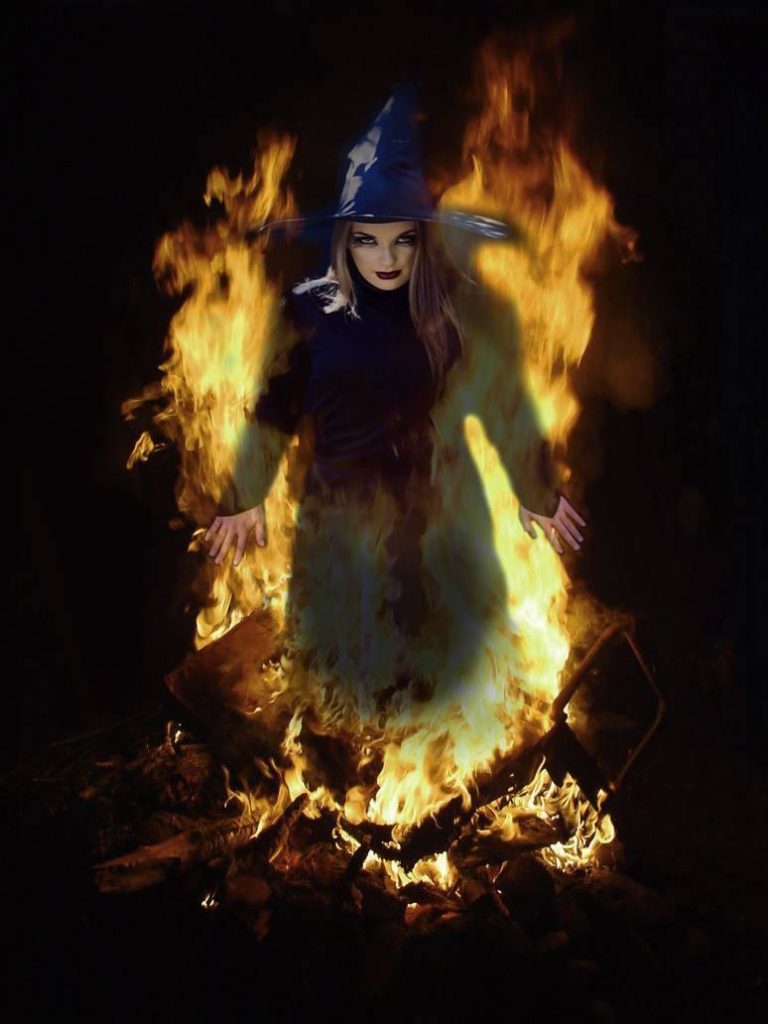
Originally published April 30, 2018. Updated April 29, 2019.
According to the Weird Holidays & Observances calendar, April 30th is Walpurgis Night (Walpurisnacht), which is also associated with “Witches’ Night.”
I have to admit something. Before today I did not understand that in some parts of the world this can be a celebration against witchcraft.
I only knew that it is now often called “the second Halloween.” (Fitting, since April 30th marks halfway to Halloween.)
So I looked into it further to learn more about it. Here’s what I came up with…
About Walpurgis Night
As it so often does, Wikipedia sums it all up best:
Walpurgis Night, an abbreviation of Saint Walpurgis Night (from the German Sankt Walpurgisnacht), also known as Saint Walpurga’s Eve (alternatively spelled Saint Walburga’s Eve), is the eve of Christian feast day of Saint Walpurga, an 8th-century abbess in Francia, and is celebrated on night of 30 April and the day of 1 May. This feast commemorates the canonization of Saint Walpurga and the movement of her relics to Eichstätt, both of which occurred on 1 May in the year 870.
Saint Walpurga was hailed by the Christians of Germany for battling “pest, rabies and whooping cough, as well as against witchcraft.” In Germanic folklore, Hexennacht (Dutch: heksennacht), literally “Witches’ Night”, was believed to be the night of a witches’ meeting on the Brocken, the highest peak in the Harz Mountains, a range of wooded hills in central Germany between the rivers Weser and Elbe. Christians prayed to God through the intercession of Saint Walpurga in order to protect themselves from witchcraft, as Saint Walpurga was successful in converting the local populace to Christianity In parts of Christendom, people continue to light bonfires on Saint Walpurga’s Eve in order to ward off evil spirits and witches.
Where Walpurgis Night Is Celebrated
This is what I learned from Holidays Calendar:
It’s a holiday mostly celebrated in parts of Europe, especially Germany, Sweden and Finland.
Variants of it are also celebrated in the Czech Republic, Estonia, Slovenia, Latvia and Lithuania.
In Finland it’s combined with May Day to create a celebration called Vappu.
Second Halloween –Or First?
It’s also called a “second Halloween” because especially in Germany people dress up in costumes and play pranks.
No matter where it’s celebrated, fire –usually in the form of bonfires, but also fireworks– is involved.
Treats and special eats are also part of the fun.
Yes, it sure sounds a lot like the American version of Halloween, but since it April 30th comes before October 31st, wouldn’t it be the first Halloween?
No, because All Hallows Eve is truly the original Halloween, right?
But What About the Witches?
The Wikipedia info first made me ask about the witches, but then this sentence from Holidays Calendar’s description also got me wondering:
In the Czech Republic, Walpurgis Night is known as Pálení carodejnic or “burning of the witches” in English.
Does it seem to anyone else that it’s sort of an anti-witch night? (Since it was originally a night thought to be when witches came out. Again referring to the Wikipedia info.)
But I have to ask: if people lit bonfires to keep them away, did it work?
It seems to me it might be a sort of dangerous night to admit you’re a witch in some parts of the world (like the Czech Republic if they’re idea of celebrating is to burn witches).
But I don’t know.
Do you? I’d love to hear more from anyone who has further information.
Speaking of…
Delve Deeper?
Maybe I can educate myself with two resources I found while writing this post.
The first looks to be an excellent and in-depth account from A Gothic Curiosity Cabinet about the history and origins of the holiday:
The next is a book from Llewellyn called Night of the Witches: Folklore, Traditions & Recipes for Celebrating Walpurgis Night. It’s all about Walpurgis Night’s roots and ways to enjoy it now, including “…traditional recipes, crafts, and activities.”
Again, if you know something, say something. My inquiring mind would love more info!
New Info: Hexennacht
I’m adding this part on the original post, because initially I sort of misunderstood/had my facts wrong.
In German Folklore, May Day Eve was a Hexennacht, a night when witches gathered on the Brocken, the highest peak of the Harz mountain range. Hexennacht, which is literally Witches’ Night in German, was a night for witches.
Walpurgis started out as a kind of Northern European / Scandinavian version of Dia de Los Muertos.
It stems from a pagan Norse celebration where people would hang foliage in their homes and their barns to ward off evil spirits. They also left offerings or food and mead for the dead, who were believed to walk the Earth on that day.
When Christianity came along, it was merged with the legend of Saint Walpurga, a nun who studied medicine and who battled pests and diseases like rabies and whooping cough –and also against the effects of witchcraft.
Per Wikipedia: “Christians prayed to God through the intercession of Saint Walpurga in order to protect themselves from witchcraft…” Voila: Walpurgisnacht was born!
So Walpurgisnacht is a night against witches, Hexennacht is a night for witches.
Courtney Mroch is a globe-trotting restless spirit who’s both possessed by wanderlust and the spirit of adventure, and obsessed with true crime, horror, the paranormal, and weird days. Perhaps it has something to do with her genes? She is related to occult royalty, after all. Marie Laveau, the famous Voodoo practitioner of New Orleans, is one of her ancestors. (Yes, really! As explained here.) That could also explain her infatuation with skeletons.
Speaking of mystical, to learn how Courtney channeled her battle with cancer to conjure up this site, check out HJ’s Origin Story.
